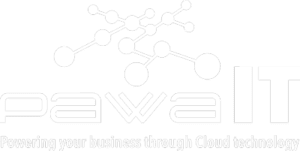“As companies solidify their cloud security strategy, they need to ensure that they’re considering where they’re at now, governance needed and metrics to follow.”
Organizations have embraced the cloud as a means of expanding their business’s value, while adding speed and scale to the process, something that accelerated during the COVID-19 pandemic. What is missing in many organizations, however, is understanding the need for both speed and security together.
Cloud is a disruptive technology that shifts the focus of IT operations away from on-premises data centers and traditional software development toward a scaled infrastructure and DevOps environment that supports continuous integration/continuous delivery. DevOps raised the bar on speed of delivery, and ideas of continuously managing risk, security, compliance and legal requirements.
Speed vs. Security?
Technical teams’ value has evolved from infrastructure to software development, now focusing on digital product delivery, like compliance reports.
More so, cloud enables rapid infrastructure scaling, standardizing developer tools, and commoditizing platforms, but often prioritizes speed.
Security is a board-level concern with high-profile data breaches requiring clear operational plans for cloud adoption.
Building a Cloud Security Strategy
For companies moving to the cloud or those in the cloud looking to expand, a few key steps are required to ensure that security is a key part of the process.
Where Is Your Company Currently At?
The first step in developing a cloud security strategy is understanding the organization’s current state and what its future state in the cloud will look like. This leads to the development of a strategic governance model, which helps define the competencies needed. Examples include tool automation capabilities, an understanding of compliance and risk, and the ability to integrate cloud to ground platforms.
Organizations use inventory tools and skill sets for training, change management, migrations, and hybrid cloud integrations, methodically considering system integrations.
A Governance Framework
Once an organization has mapped out what to do, it needs to define the respective roles of the CIO, chief risk officer, developers, security engineers and others who will be working to enable cloud security. Those roles feed into a security fabric that establishes how all of these teams connect in their day to day processes for example, how recommendation from a threat modeler becomes a mandate for a systems designer with the shared goals of speed, security and regulatory compliance.
Metrics
Finally, a company has to implement metrics focused on measuring two things: what processes are getting the job done quickly, speed to market and how well the security is working. This involves the convergence of what used to be two largely independent groups: the tech deployment delivery teams and the risk security compliance teams. Companies, currently at least, are thinking about this, and some are already doing it. But most still have yet to put it into practice.
It’s a thorough process but these steps are necessary to secure the data and systems that are the lifeblood of businesses today. A company that can execute this well will make it through the storm.
Additional Resources








